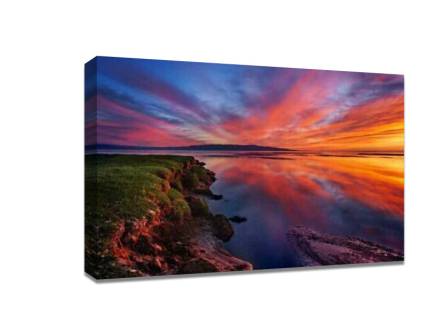The application of foreground
The application of foreground
One of the most interesting things about photography is that it can show three dimensions on a two dimensional plane. It shows the height, width and depth of things. And to do that, canvas prints composition is very important. And composition is never over. One of the most common techniques in composition is the use of foreground.
What is the foreground?
Foreground is an important factor in photographic composition. As a part of a photograph, photo on canvas they can highlight the main body and increase the sense of space and depth of the picture. Therefore, in the photographic composition, the correct use of foreground and background coordination can make the scenery in the photo more harmonious and unified, thus more appealing. In order to achieve this simulation effect, some foreground must be used to create the illusion and make the picture look more spatial and deep.
How to use foreground
1) Guiding subject
The most common is to use the foreground to direct the viewer's eye to the main body. Use a wide-angle mirror to match the foreground, you can also exaggerate the sense of space and depth, but at this time, the foreground is better to have the function of guiding the line of sight, for example, to lead to the village by the undulating mountain road, to lead to the tower with a row of the same trees.
2) Strengthen comparison
If you include some black objects or silhouettes in the foreground of the photo, it will constitute a strong contrast, and then to highlight the dark and white background. For example, in the picture below, the black rock in the foreground is used to highlight the sky behind it, which makes the composition particularly vivid.

3) Add interest
When photographing landscapes, anything can be used to add interest to the foreground and give the picture depth. It could be trees, animals, buildings or vehicles, but they have to relate to the whole picture. Otherwise, the whole picture will become disunited and destroy the whole artistic conception. The following figure has utilized the wooden pile as the foreground, successfully brought out the distance of the sky behind, and also made the composition no longer monotonous.
4) Increase the sense of space and depth of the picture. Although the images we see after photography are all two-dimensional, the perspective and distance of the three-dimensional space can be well restored through the setting of the foreground. For example, visual objects have the characteristics of being large and large, and use the contrast between foreground and background to create a three-dimensional visual feeling.
5) Details that need to be paid attention to in the application of foreground
1. First, as the foreground, of course, cannot block our view of the subject. The foreground serves the subject by highlighting and highlighting the subject.
2. Can't steal the main body's spotlight. The orientation of the foreground in a picture is green leaves, supporting roles, so his performance is weaker than the main body. You want to be able to focus on what's important, not what's important.
3. Accurate application and beautiful composition; acrylic prints ensure that the foreground is in line with the theme of the whole picture, not irrelevant or not prominent at all. That such foreground simply did not achieve the expected effect will be a lot of surplus.
Recent Posts
-
How Photos to Canvas Prints Make Your Photography Stand Out
In a world saturated with digital images, photographers—both amateur and professional—ar …16th May 2025 -
Eco-Friendly and Quality Canvas Prints in Australia: What to Look For
Choosing art for your walls is more than a style decision—it’s also an opportunity to ma …16th May 2025 -
Cheap Canvas Prints Custom-Made: Ideal for Events, Gifts & More
In today’s world of personalized décor and thoughtful gifting, canvas prints have becom …16th May 2025
